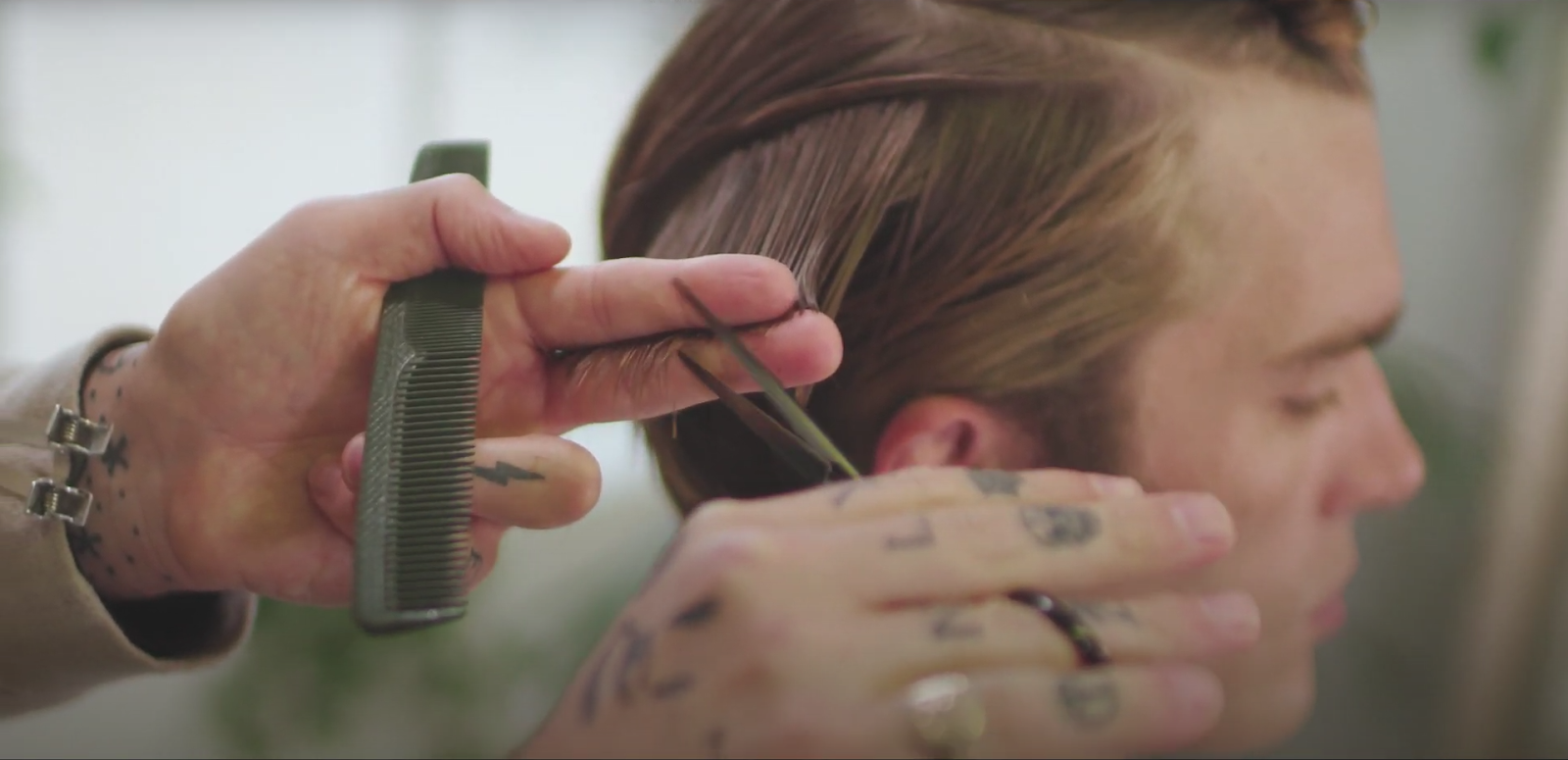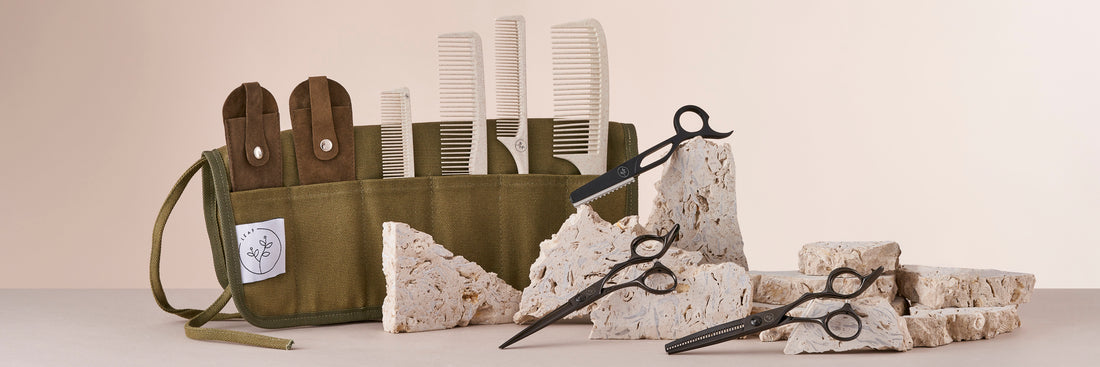Learning to cut hair is a continuous process - there are always new methods to try. But understanding the fundamentals is key to progressing onto expert techniques. Here are all the steps you should follow to create flawless haircuts. If you’re keen to get into the details download our free PDF guide.
Understanding Shape and Form When Cutting Hair
As hairstylists, your geometry lessons from school are extremely useful when learning to cut hair. Geometric shapes such as squares, triangles and circles should all be used when creating a cut. Typically one haircut is made up of a variety of smaller shapes, but they all come together to form one primary shape.
By learning to cut using geometric shapes, your haircuts will have a strong outline and a flawless, defined shape.
How to Part Hair for Cutting
It is also important to part the hair when cutting as it is one of the biggest factors that changes the shape of the haircut. It also allows you to be thorough and precise when creating a haircut. There are many different patterns of partings, but the method you use will all depend on the haircut you are trying to achieve, and how you want the hair to move.
In general, to get a clean section every time, take a fine-toothed or parting comb. Take both forefingers and place them on the tip of the tooth, placing your palm on the hair. Glide the comb, putting pressure on the tip, through the hair. You will then have a perfect, clean section to work with.
Distribution in Hair Cutting
You have your sections, but now you need to think about how you comb the hair in relation to the sections you have created. This is what we call distribution. You must consider the following when using distribution:
- Weight distribution of the haircut.
- Whether the line will be cut strong or soft.
- Whether the cut will move in the desired direction.

Elevation in Hair Cutting
Elevation is the way you lift the hair away from the head before making a cut. Elevation changes the silhouette of the haircut, by removing more or less weight from the perimeter of the cut. It is usually referred to in angles, such as 45° or 95°.
What Are The Different Cutting Techniques?
Now that you have prepared the hair for the cut, you can get your scissors ready. But there are many different techniques to consider, and again, each will have a huge impact on the final result of your creation.
Blunt Hair Cutting Technique
This technique is great for adding definition to the hair by creating a solid, sharp line. It is great for thicker hair as it adds focus to the fullness of the hair.
Make sure your sections are thin, as thick sections will cause a lack of definition. Get your client to tilt their head forwards, and comb the hair downwards. Holding the comb just above where you want the length to sit, take your scissors parallel to the comb and cut a straight line.
Point Cutting Hair Technique
Point cutting softens the line of the cut, so you can avoid the harsh lines which we created with the blunt cutting technique.
It is a very simple technique; first, cut a straight, dominant line. Hold the hair between your fingers, and point your scissors towards the head. Cut along the dominant line without changing the position of the scissors.

Razor Cutting Hair Technique
Razors are a fantastic tool which should be used more often - they allow you to seamlessly remove weight and length from the hair, much more quickly than normal scissors could.
As always, ensure the hair is parted and sectioned. Working on the perimeters of the hair, hold the hair in front of the second knuckle, place the blade against the hair and lightly glide it over.
Want to try out this technique? Our Black Edition Razor is lightweight and comfortable in your hand, to allow you to create the perfect looks with ease.
Slicing Hair Cutting Technique
This technique requires you to slice the hair in it’s natural fall to create texture and encourage direction, much like the razor cutting technique. The more pressure you use with slicing, the more weight you will remove. It is also important to do it on wet hair.
All you have to do is point your scissors downwards away from the scalp, and slide it down the lengths of the hair. The more times you repeat this, the more weight you will remove.
Download Our Free Cutting Techniques Guide
Keen to learn more? Download our PDF that includes even more cutting tips and techniques that you can learn.
Keen to learn more in the long-run? With LEAF Academy, you can watch tutorials from top names in the industry. Find out more here.







1 comment
Thanks for sharing such an informative & ultimate guide for hair cutting techniques with us.